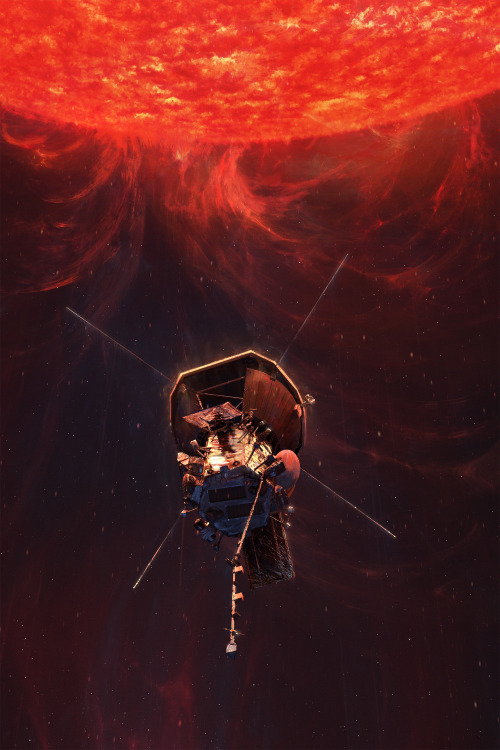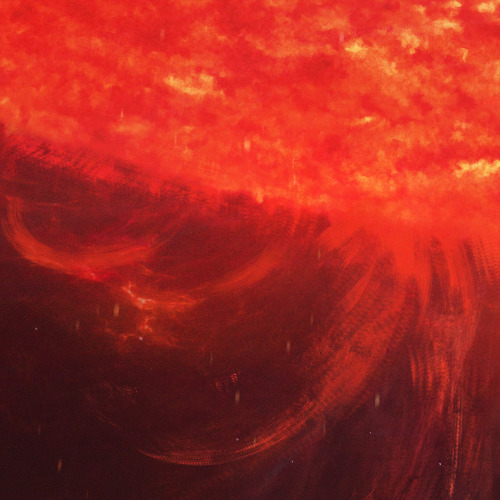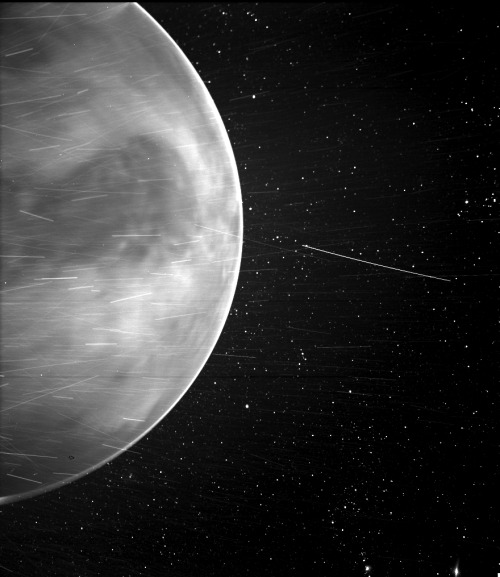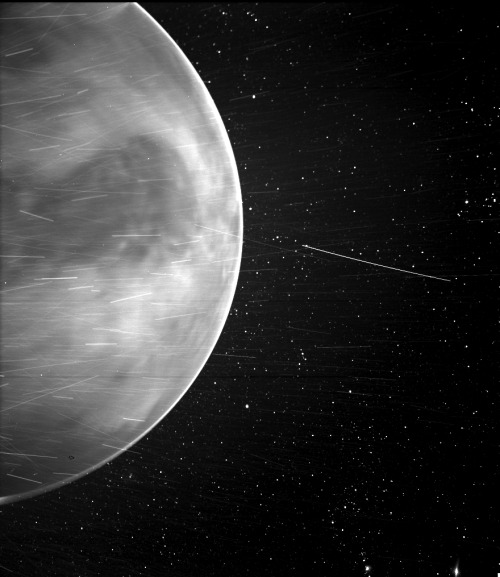#parker solar probe
Real space mission
NASA’s Parker Solar Probe will be the first-ever mission to “touch” the Sun. The spacecraft, about the size of a small car, will travel directly into the Sun’s atmosphere about 4 million miles from the surface.
-
As always, prints of my artworks are available in my print shop at Artstation and at Displate.com
Post link
Parker Solar Probe: A surprising image of the night side of Venus, taken during a flyby of the planet last July, showing much more surface detail than expected. Way to overachieve, little space robot. (I went to the PSP launch back in August 2018, so I have a soft spot for this particular space robot.) Here’s the original image caption, since I don’t think I can summarize what’s going on here very well:
When flying past Venus in July 2020, Parker Solar Probe’s WISPR instrument, short for Wide-field Imager for Parker Solar Probe, detected a bright rim around the edge of the planet that may be nightglow — light emitted by oxygen atoms high in the atmosphere that recombine into molecules in the nightside. The prominent dark feature in the center of the image is Aphrodite Terra, the largest highland region on the Venusian surface. Bright streaks in WISPR, such as the ones seen here, are typically caused by a combination of charged particles — called cosmic rays — sunlight reflected by grains of space dust, and particles of material expelled from the spacecraft’s structures after impact with those dust grains. The number of streaks varies along the orbit or when the spacecraft is traveling at different speeds, and scientists are still in discussion about the specific origins of the streaks here. The dark spot appearing on the lower portion of Venus is an artifact from the WISPR instrument.
Credits: NASA/Johns Hopkins APL/Naval Research Laboratory/Guillermo Stenborg and Brendan Gallagher
Post link
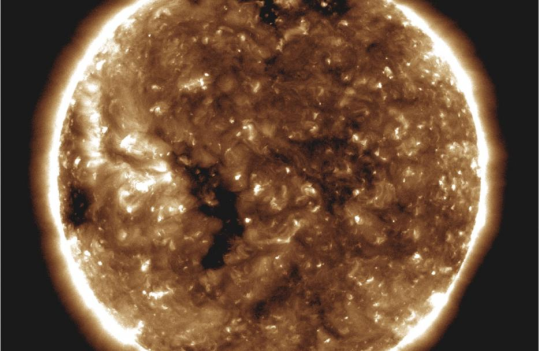
On November 11th, 2019, the NASA Parker Solar Probe (PSP) successfully completed its third rotation around the Sun, in an ongoing effort to collect detailed data about the heliosphere region. The probe is the closest any spacecraft has come to the Sun, which allows the onboard instruments up-close access to its structure and inner workings. PSP is set to make 24 orbits before ending its mission, with eventual iterations moving the probe closer and closer to the Sun. Despite only being two years into its journey, PSP is already providing a great deal of valuable data.
Parker Solar Probe: Image of the solar corona from the probe’s first perihelion pass. This was taken on November 8th at just 16.9 million miles from the sun. The bright spot near the center is actually Jupiter in the distance, and the dark dots nearby are described as a “result of background correction”
Credits: NASA/Naval Research Laboratory/Parker Solar Probe
Post link
A Venus Flyby. Image Credit: NASA, JHUAPL, Naval Research Lab, Guillermo Stenborg and Brendan Gallagher
Post link
Our Parker Solar Probe Just Touched the Sun!

For the first time in history, a spacecraft has touched the Sun. Our Parker Solar Probe flew right through the Sun’s atmosphere, the corona. (That’s the part of the Sun that we can see during a total solar eclipse.)

This marks one great step for Parker Solar Probe and one giant leap for solar science! Landing on the Moon helped scientists better understand how it was formed. Now, touching the Sun will help scientists understand our star and how it influences worlds across the solar system.

Unlike Earth, the Sun doesn’t have a solid surface (it’s a giant ball of seething, boiling gases). But the Sun does have a superheated atmosphere. Heat and pressure push solar material away from the Sun. Eventually, some of that material escapes the pull of the Sun’s gravity and magnetism and becomes the solar wind, which gusts through the entire solar system.
But where exactly does the Sun’s atmosphere end and the solar wind begin? We’ve never known for sure. Until now!

In April 2021, Parker Solar Probe swooped near the Sun. It passed through a massive plume of solar material in the corona. This was like flying into the eye of a hurricane. That flow of solar stuff — usually a powerful stream of particles — hit the brakes and went into slow-motion.
For the first time, Parker Solar Probe found itself in a place where the Sun’s magnetism and gravity were strong enough to stop solar material from escaping. That told scientists Parker Solar Probe had passed the boundary: On one side, space filled with solar wind, on the other, the Sun’s atmosphere.

Parker Solar Probe’s proximity to the Sun has led to another big discovery: the origin of switchbacks, zig-zag-shaped magnetic kinks in the solar wind.
These bizarre shapes were first observed in the 1990s. Then, in 2019, Parker Solar Probe revealed they were much more common than scientists first realized. But they still had questions, like where the switchbacks come from and how the Sun makes them.

Recently, Parker Solar Probe dug up two important clues. First, switchbacks tend to have lots of helium, which scientists know comes from the solar surface. And they come in patches.
Those patches lined up just right with magnetic funnels that appear on the Sun’s surface. Matching these clues up like puzzle pieces, scientists realized switchbacks must come from near the surface of the Sun.
Figuring out where switchbacks come from and how they form will help scientists understand how the Sun produces the solar wind. And that could clue us into one of the Sun’s biggest mysteries: why the Sun’s atmosphere is much, much hotter than the surface below.

Parker Solar Probe will fly closer and closer to the Sun. Who knows what else we’ll discover?
Make sure to follow us on Tumblr for your regular dose of space!

